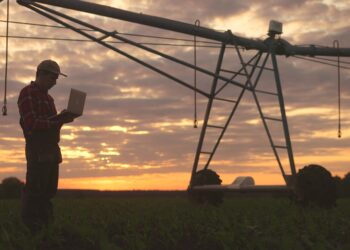The pandemic has hit Canada’s oilpatch hard. Here’s how the federal government intends to help.
It wasn’t long after oil prices started their plunge in March on the back of the coronavirus pandemic that calls for financial aid for Canada’s oilpatch began. They only heightened as the industry shed $8bn in spending and more than 700,000 barrels per day of production in the following weeks.
Ottawa has responded to the plea with programs for seemingly every size of oil and gas company in the country. Yet not all of the money will be available immediately and some of it will come with substantial conditions attached. Here is a closer look at what the various aid programs consist of: Initiatives to be implemented through the Business Development Bank (BDC) and Export Development Canada (EDC) are aimed at small and mid-size producers, oilfield services, and refineries with $15-60m in loans per company on offer from BDC, to be repaid within four years, and loan guarantees up to $100m per company from EDC.
These programs were announced as early as mid-April, but thus far it’s not entirely clear how many companies will receive assistance. For example, the BDC program will only begin to be deployed this month, and as of last week the final details were still being finalized. The Large Employer Emergency Financing Facility (LEEFF), meanwhile, is aimed at companies with annual revenues above $300m and which need financing of at least $60m. Conditions required to qualify for this program include disclosing environmental plans and limits on executive pay and dividends.
Prime Minister Justin Trudeau notably described LEEFF as a bridge loan program, not a “bailout,” with the Canadian government fulfilling its responsibility as the lender of last resort. While the government of Alberta and industry leaders welcomed news of the LEEFF, many observers believe the conditions attached to the financing could deter some companies from applying. One key detail within the program is a built-in safeguard for taxpayers which requires participating companies to give the government either an ownership stake or cash equivalent of 15% of the principal loan amount. The likelihood is that the only companies who will access this program are the ones in dire straits, with more following suit if the downturn continues into 2021.
The Canada Emergency Wage Subsidy (CEWS) is for employers who have experienced an eligible reduction in revenue and provides up to $847 a week for each employee. Given that there are about 200,000 Canadians directly employed by the oil and gas industry, the payroll subsidy could provide a significant amount of relief to companies struggling to pay their workers. Nevertheless, the subsidy cannot be used to reinvigorate exploration and drilling, an area where there have been significant layoffs in recent months.Canada is also investing $1.7bn to cleanup inactive oil and gas wells in a move designed to stimulate the oilfield service sector while reducing costs and liabilities for producers.
The industry has already had government help on that score in recent years as the number of inactive oil and gas wells grew. Yet the program is really intended to help jump-start the oilfield service sector, which has seen work dry up quickly as producers pull back on spending. The money for this program has been given to provincial governments in British Columbia ($120m), Alberta ($1bn), and Saskatchewan ($400m) to distribute as they see necessary. About 3,000 companies have already applied for the program with a view to remediating close to 37,000 wells.
Environmental groups have welcomed the idea but want the government of Alberta in particular to also make policy changes—like regulated timelines for cleanups and upfront bonds—to prevent the list of orphan and inactive wells from growing. The Canadian government has also announced the creation of a $750m fund intended to reduce greenhouse gas emissions, mainly methane, which includes $75m for offshore industry in Newfoundland and Labrador. The oil and gas sector is the source of 43% of Canada’s methane emissions, considered one of the most potent greenhouse gases around.
According to the federal government this program and the well cleanup program combined will generate about 10,000 jobs across the country. Even if a slight recovery in oil prices is relieving some of the pressure on industry amid the easing of coronavirus lockdown restrictions, energy firms clearly view the federal programs as a necessary bridge to the other side of the crisis. Many believe that companies may not be able ramp up production to pre-COVID levels until well into 2021.












